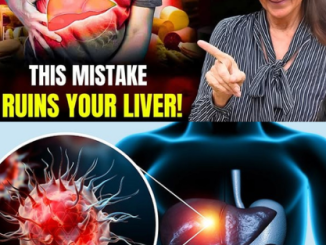
Think Twice Before Tossing Those Shells
You just made breakfast, and now you’ve got a pile of eggshells sitting on the counter. Most folks would swipe them into the trash without a second thought. But hold on—those cracked, chalky remnants are more valuable than they look. What if I told you they could transform your garden into a thriving, nutrient-rich paradise?
Eggshells aren’t just waste. They’re tiny treasure chests full of minerals, and when used right, they can breathe new life into your soil, repel pests, and even help start new plants. Ready to give your garden a calcium-powered boost? Let’s crack into it.
Eggshells as a Natural Fertilizer
Eggshells are made almost entirely of calcium carbonate, a mineral that plants crave. Calcium is essential for healthy cell walls and strong root systems, especially in crops like tomatoes, peppers, and squash.
Here’s how to make your own DIY eggshell fertilizer:
- Rinse the shells to remove any leftover egg white or membrane.
- Let them dry until they’re brittle.
- Crush them using a mortar and pestle, blender, or rolling pin.
- Sprinkle the powder around your plants or mix it directly into the soil.
It’s that easy. And the results? Stronger plants, improved root growth, and fewer issues like blossom end rot—especially in calcium-hungry plants.
A Sharp Defense Against Pests
Forget the chemical sprays. Eggshells offer a natural way to keep creepy crawlers at bay.
The sharp edges of crushed eggshells make an uncomfortable path for pests like slugs, snails, and soft-bodied caterpillars. Simply scatter a ring of crushed shell pieces around your plants, and those pests will think twice before crossing it.
It’s low-cost, non-toxic, and safe for pets and pollinators. That’s a win in every direction.
Seed Starters That Decompose with Purpose
Got an egg carton lying around? Perfect. Your next batch of seedlings can grow in biodegradable mini-pots made from eggshells.
Here’s the step-by-step:
- Gently crack eggs near the top so you keep most of the shell intact.
- Rinse and dry the halves.
- Fill them with a bit of potting soil.
- Drop in your seeds.
- Set them in the carton to keep them upright.
When your seedlings are ready for the garden, crush the shell a bit and plant the whole thing. The roots will grow through, and the shell will break down, feeding the young plant. No plastic. No waste.
Video : You Will Never Throw Away Eggshells After Watching This
Boost Your Soil with Essential Minerals
Yes, calcium is the star, but eggshells also contain magnesium, phosphorus, and potassium—minerals that help balance your soil and fuel plant growth.
Crushing and mixing shells into your garden bed or container soil can:
- Improve soil structure
- Increase nutrient density
- Promote healthy microbial activity
Think of it as feeding your soil a natural multivitamin.
Supercharge Your Compost Pile
If you compost (and you totally should), toss those eggshells in. They’re an excellent green-brown balancer, helping neutralize the acidity from food scraps like fruit peels and coffee grounds.
Here’s a quick tip:
- Crush them before tossing in. Whole shells take longer to break down.
- Mix them well to distribute the nutrients evenly.
In the end, you’ll get richer, more mineral-packed compost for your plants.
Fix Soil pH the Natural Way
If your soil is too acidic, certain plants might struggle to thrive. That’s where eggshells come in.
Since calcium carbonate is alkaline, adding crushed shells can help raise the soil’s pH, making it more hospitable for plants that don’t love acidic conditions—like lavender, cabbage, or rosemary.
Just sprinkle some crushed shells around the base of these plants and let nature do the rest.
Tomatoes and Peppers Absolutely Love Eggshells
If you’ve grown tomatoes or peppers before, you might’ve dealt with blossom end rot—those nasty black patches on the bottoms of fruits. This happens when calcium is lacking.
Prevent it by:
- Adding crushed eggshells directly into the planting hole when transplanting.
- Mixing some into the soil throughout the growing season.
Your plants get a steady release of calcium, and your tomatoes grow firm, juicy, and rot-free.
Give Your Plants a Little Extra Love
You can even make an eggshell tea for a quick nutrient boost. Boil crushed shells in water, let it sit overnight, strain it, and use the liquid to water your plants. It’s like a natural energy drink for your garden.
Or, blend eggshell powder into homemade foliar sprays and compost teas for added kick.
Video : Don’t throw away the eggshells. Few people know this amazing trick.
Quick Tips for Using Eggshells in the Garden
- Always clean and dry the shells first to prevent mold.
- Store them in a jar or container until you have a decent amount.
- Grind them finely for faster absorption—especially in potted plants or fast-growing veggies.
- Don’t use eggshells as your only fertilizer. They’re great in combination with other organic materials.
Final Thoughts: Don’t Trash It—Plant It
Eggshells might seem like the most boring part of your breakfast, but they’re actually one of the easiest, cheapest, and most eco-friendly tools you can use in the garden. From enriching soil to repelling pests and nurturing seedlings, they’re a small thing that makes a big difference.
So next time you crack an egg, skip the trash and save the shell. Your garden—and your wallet—will thank you.


